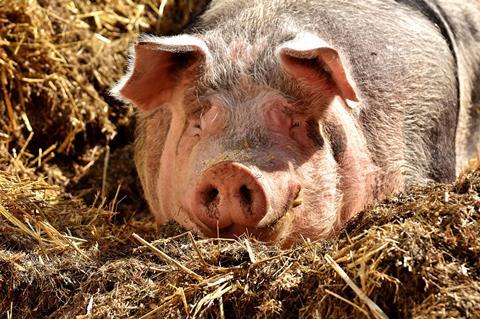In agroecosystems where manure is applied as organic fertilizer, these antibiotic residues exert strong selective pressure on soil microbial communities. Antibiotic-resistant bacteria (ARB) from animal manure would increase the concentration of ARB in soils.

The influencing mechanisms of soil types on the distribution of ARB were worthy of further exploration. This study demonstrates that CTC-manure induced more resistance of soil indigenous microbes in fluvo-aquic soil, Lactobacillus, Dyella, Ralstonia, and Bacillus were the key different genera, and manure control is an effective way to reduce the risk of soil ARB. The researchers’ findings appeared December 19, 2023 in Soil Ecology Letters.
Antimicrobial resistance
A series of studies on the risk of ARB and antibiotic-resistant genes (ARGs) have been conducted by the Institute of Environment and Sustainable Development in Agriculture, Chinese Academy of Agricultural Sciences. For example, they found that Chloroflexi was closely associated with ARGs removal, and potential host bacteria of ARGs varied with different antibiotics. They also found multidrug resistance genes increased the most in red soil with antibiotics, and ARGs were directly influenced by microbes, indirectly affected by soil properties.
Professor Li said: “Agricultural production has caused a heavy burden on the environment, and the overall trend of deterioration is still increasing. This is a contradiction that must be resolved.
”The results of the second national survey of pollution sources released recently showed that the pollution load from agricultural sources exceeded that of industry and cities, highlighting the importance and urgency of agricultural environmental protection work. Therefore, we chose and explored agricultural and rural environmental protection issues, hoping to contribute to the solution of environmental problems.”
Community composition
In this study, they found that a higher shift in the operational taxonomic units and the community composition of chlortetracycline (CTC)-resistant bacteria (CRB) were observed in fluvo-aquic soil than in black and red soils. CTC induced antibiotic resistance development in soil indigenous microorganisms (Streptomyces, Pseudomonas, Bacillus, Rhodococcus, and Paenibacillus), and the induction was most obvious in fluvo-aquic soil.
Additionally, the key different genera were Microbacteriaceae (black soil), Lactobacillus, unclassified_c__Bacilli and Paenibacillus (fluvo-aquic soil), and Dyella, Ralstonia and Bacillus (red soil). It was concluded that manure application led to higher CRB risk in fluvo-aquic soil compared with black and red soils. This result suggests appropriate methods according to soil types are important ways to reduce the risk of soil resistant bacteria during manure return.
Manure application
Professor Li said, “The application of manure to the soil increased microbial resistance, which was even stronger when the manure contained antibiotic residues. Moreover, manure application led to higher CRB risk in fluvo-aquic soil compared with black and red soils. As a result, scientific manure return according to soil types is also important for monitoring the risk of resistance in agricultural practice.”







No comments yet